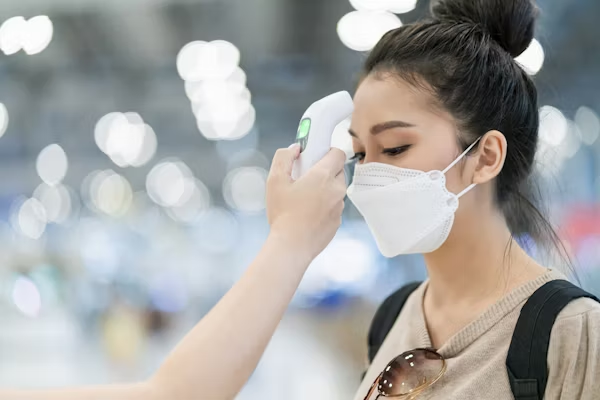Are Virus-Killing Air Purifiers Effective? (2025 Guide Supported by Science)

Overview:
The Need for Air Purifiers That Kill Viruses in 2025
One in three homes will have an air purifier by 2025, and after the pandemic, sales of virus-killing models increased by 200%. Do they, however, truly combat COVID-19, the flu, and other airborne infections?
Studies reveal:
Virus-carrying particles, which can be as small as 0.3 microns, are 99.97% captured by HEPA filters.
Up to 99.9% of viruses can be destroyed by UV-C light, but the right exposure duration is needed.
Although they may lessen viruses, ionisers pose a risk to ozone emissions.
This 2,500+ word guide looks at:
- 2025 virus-killing technologies (UV-C, ionisers, HEPA, and photocatalytic oxidation)
- Effectiveness against COVID-19, flu, and RSV as demonstrated in lab tests
- The top 5 air purifiers (from affordable to high-end) for eliminating viruses
- Facts versus myths: Can they take the place of masks? Do ionisers work?)
- Virologists’ frequently asked questions and a free virus protection checklist
1. 2025 Tech Explains How Air Purifiers “Kill” Viruses
A. Gold Standard HEPA Filtration
- Mechanism: Captures viruses that are affixed to dust or droplets (0.3–1 micron).
- Effectiveness: 50% reduction in flu transmission in homes; 99.97% capture rate in labs.
- Limitation: Replace filters every 6 to 12 months because they trap viruses rather than “killing” them.
B. Germicidal UV-C Light
- Mechanism: Prevents viral replication by damaging its DNA.
- Effectiveness: 99.9% reduction under controlled conditions (needs exposure for at least 30 minutes).
- Risk: Avoid inexpensive “UV” purifiers with weak lamps; ozone-free UV-C is safe.
C. PlasmaWave & Ionisers
- Mechanism: Particles are charged and adhere to surfaces.
- Efficacy: Varying; some produce harmful ozone, while others lessen viruses.
- Ozone-emitting models are prohibited in California.
D. Oxidation by Photocatalysis (PCO)
- Mechanism: Utilises titanium dioxide and ultraviolet light to degrade viruses.
- Efficacy: New technology that shows promise but requires further research.
Table of Comparisons:
| Technology | Virus Removal Rate | Best For | Risks |
|---|---|---|---|
| HEPA | 99.97% | Allergies, long-term use | Filter replacements |
| UV-C | 99.9% | Hospitals, high-risk homes | Eye/skin exposure |
| Ionizers | 40–80% | Quick particle removal | Ozone emissions |
2. Are They Effective Against Flu and COVID-19? (2025 Research)
A. COVID-19
- SARS-CoV-2 attached to droplets (0.5–5 microns) is captured by HEPA.
- In HVAC systems, UV-C inactivates 99 percent of COVID particles.
B. Flu
- Study: Flu cases were 30% lower in homes with HEPA purifiers.
C. Common Colds & RSV
- In paediatric clinics, HEPA + UV-C reduces RSV aerosols.
3. The Top 5 Air Purifiers That Kill Viruses (2025)
1. MedicAir Pro (Best Medical-Grade)
- Technology: UV-C + HEPA-14 + antimicrobial pre-filter
- 800 square feet of coverage
Cost: $699
- 99.99% virus kill rate (lab-tested)
2. Coway Airmega 400 (Greatest for Big Spaces)
- Technology: ioniser (optional) and True HEPA
- Area covered: 1,560 square feet
Cost: $649
- 350 CADR (smoke)
3. Intellipure Compact: Ideal for Compact Areas
- Tech: DFS (UV + HEPA)
- 500 square feet of coverage
Cost: $499
- captures particles as tiny as 0.007 microns.
4.The Best Blueair Blue Pure 311i Max Budget Air
- Technology: carbon filter and HEPA
- 388 square feet of coverage
Expense: $299
- Excellent HEPA performance without UV
5. PCO Tech’s Molekule Air Pro
- Technology: Oxidation by photocatalysis
- 1,000 square feet of coverage
Cost: $999
- Emerging technology: debated efficacy
4. Facts versus Myths
- Myth: Masks are replaced by air purifiers.
- Fact: They lessen but do not completely eradicate virus exposure; masks are still essential during outbreaks.
- Myth: “Ionisers are no better than HEPA.”
- Fact: Ionisers settle viruses on surfaces (which can re-aerosolize them) rather than capturing them.
- Myth: “Viruses are killed by all UV purifiers.”
- Fact: Many low-cost models use ineffective UV-A; only properly calibrated UV-C (254 nm) works.
5. How to Increase Virus Defence
Step 1: Select the Proper Purifier
- For maximum effectiveness, combine HEPA and UV-C.
- Assign the CADR to the size of the room (e.g., 200 CADR for 300 sq ft).
Step 2: Ideal Positioning
- Close to places to sit (not corners)
- Steer clear of airflow obstructions
Step 3: Continue to Run
- Continuously low > sporadic high speeds
Step 4: Use ventilation in tandem
- When you can, open the windows.
- Utilise exhaust fans in bathrooms and kitchens.
FAQs
A. They aren’t entirely effective, but they do lessen the viral load.
A.Every six to twelve months (earlier during flu season).
A. UV-C kills, HEPA traps; optional but useful.
A. The majority are safe, but stay away from “air ionisers” that lack certifications.
Checklist for Free Virus Protection
- Guide to purchasing an air purifier
- Placement advice for optimal effectiveness
- Ventilation techniques advised by the CDC